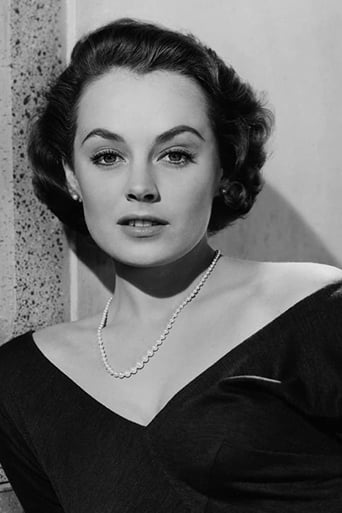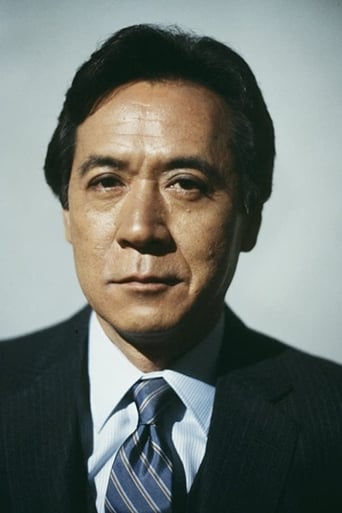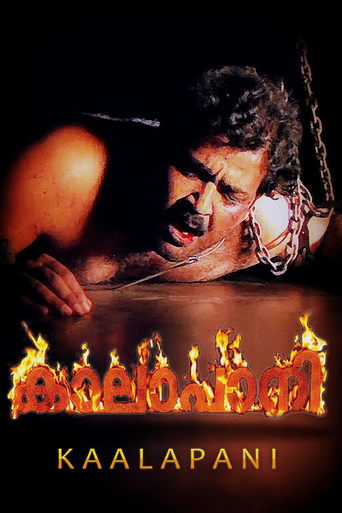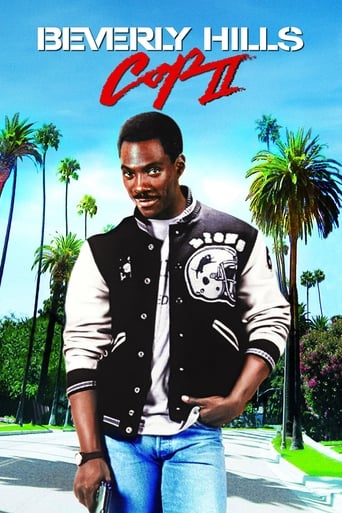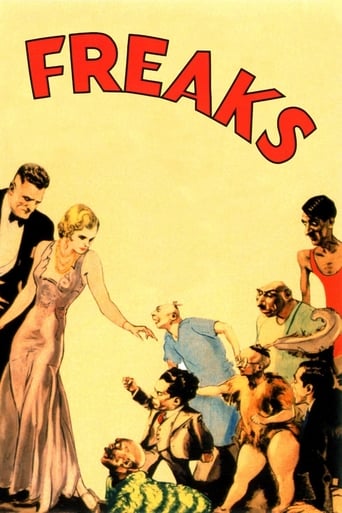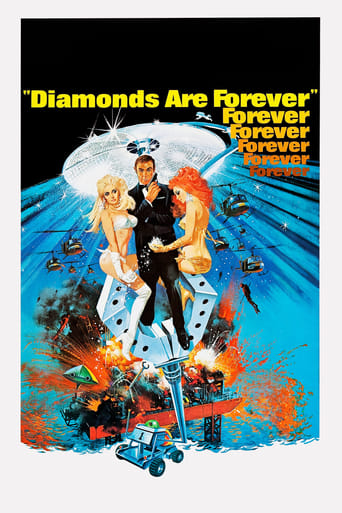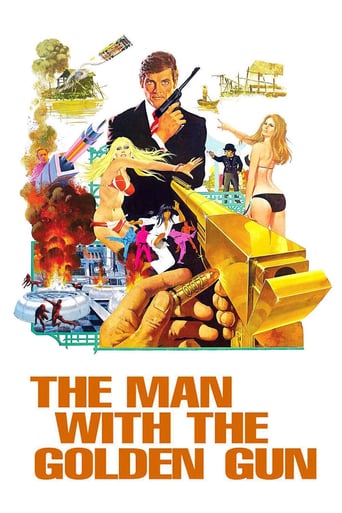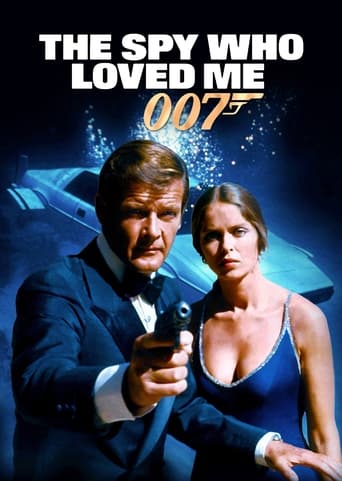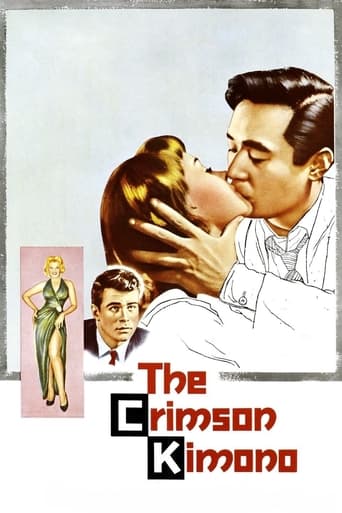

The Crimson Kimono (1959)
A Los Angeles detective and his Japanese partner woo an artist while solving a stripper's murder.
Watch Trailer
Cast
Similar titles

Reviews
Just perfect...
It's no definitive masterpiece but it's damn close.
The thing I enjoyed most about the film is the fact that it doesn't shy away from being a super-sized-cliche;
The story, direction, characters, and writing/dialogue is akin to taking a tranquilizer shot to the neck, but everything else was so well done.
Ostensibly a murder mystery but more a romantic drama with strong social overtones, "The Crimson Kimono" comes armed with noble intentions and the stylistic panache you associate with director- writer Samuel Fuller, but not much in the way of a story.A stripper named Sugar Torch is gunned down one night on a busy Los Angeles street. Detective Sgt. Charlie Bancroft (Glenn Corbett) and his partner Joe Kojaku (James Shigeta) develop a lead with the help of a young artist named Chris (Victoria Shaw). Both men also develop strong feelings for Chris, which leads to sparks and considerable misunderstandings after she makes her decision.In a DVD doc that comes with this movie, director Curtis Hanson notes that this "fits in no genre except the Sam Fuller genre," which is a great description. "The Crimson Kimono" starts with a typical Fuller bang, a big brassy stripper doing her act and then walking into a dressing-room ambush. The killing doesn't really make sense, either as it goes down or when you think about it after the movie is over, but it makes an impression, which is why Fuller was Fuller.The problem of the murder isn't only its incoherence, but the way it is swept under the rug so soon in favor of a social-issues drama which ostensibly deals with racism but is really about a guy his partner correctly describes at one point as a "meathead." At one point, we hear Bancroft even say "Nobody cares who killed that tramp," which is a heckuva line from a homicide detective except it fits with the mood of the film.Corbett and Shigeta make for a sturdy pair in their film debuts, so much so we care more about their issues as the story develops than we do about any progress they make on the case. Too much time is spent on a secondary character, Mac (Anna Lee), who drinks, smokes, and dispenses enough folky wisdom about art and love we come to understand that she's basically Sam in a dress. Lovers of the quintessential Fuller argot will have a field day here: "I'll have to tap her for a raincheck." "You tackle Rembrandt at the school and I'll shortstop Shuto." "You believe that eyewash?" All the above lines are from Kojaku, who seems like the last person to suffer a big emotional crisis by suddenly discovering he's a Japanese- American. But he does, because it's that kind of movie.Fuller fans will appreciate the film's dynamics at play, the way he challenges the audience by setting up a potential romance between Bancroft and Chris and then pushing the race buttons once he's got you thinking you're all assimilated. It's a strange sort of racial- issues story in that none of the white characters seem to have serious hang-ups. Fuller did like to complicate racial issues in his movies, but the curves that worked so well in "Shock Corridor" kind of flop here.Sam Leavitt's cinematography captures a somewhat hallucinatory Los Angeles at night, with smoky nimbi hanging over characters as they prowl lonely alleyways and pool halls. As a police procedural, "Crimson Kimono" has the right atmosphere.Liking the atmosphere, the characters, and the tangy Fuller spirit is not enough when the story doesn't connect. In the end, you are left with a film about failure to communicate that itself doesn't really communicate much of anything other than the wrongness of jumping to conclusions and the need for a good mystery to care more than a little at the end as to whodunit.
Somebody kills the stripper, two old army buddies who are now cop partners set out to discover whodunit. Sgt pretty boy is a white guy. His buddy is Japanese. Now we have the real plot. The stripper getting killed is just the sub-plot used to tell the story of east meets west.At the beginning of the investigation along comes Chris the female artist, pretty boy falls hard for her and tells everyone he's got it bad and wants wedding bells. Ooopsie. Buddy Japanese pal also falls for her and she falls for him. How to tell pretty boy? Drama ensues and he tells white boy that he and Chris are hot and then more drama as buddy thinks pretty boy is prejudiced but he's not and then Chris tells him he's not but he tosses everything in the suitcase and splits but then they catch the bad guy who killed the stripper but he didn't; some woman who appears out of nowhere did and then the Japanese buddy realizes he was wrong and apologizes to pretty boy but its too late so he and Chris kiss and it's THE END. Whew! Not that bad, guess in 1959 this race/culture thing was very incredibly sensitive and so this was most likely a ground-breaker back then By today's standard though, it's pretty much a soaper.
After a stripper is shot dead, two LAPD officers investigate. Corbett and Shigeta, each making his film debut, play the cops. Corbett does OK, but Shigeta appears to be an unnatural actor; he looks like he is simply reading his lines. The murder investigation becomes secondary as the film focuses on the love triangle between the two cops and an artist, played by beautiful Australian actress Shaw. Fuller had a tendency to tackle social issues in his films and here it is the interracial romance between Japanese Shigeta and Shaw. Unfortunately, the romance is rather clumsily handled and the film goes off in too many different directions before abruptly wrapping things up too neatly.
Sam Fuller directed "The Crimson Kimono," starring Glenn Corbett, James Shigeta, Victoria Shaw and Anna Lee, and this 1959 film is not your usual detective noir. Corbett and Shigeta are Charlie Bancroft and Joe Kojaku, buddies from the Korean war and now partners in the LA Police Department, who investigate the death of a stripper. In the course of that investigation, they meet a beautiful artist (Shaw) and both men fall for her; she in turn falls for the gentle and intelligent Joe. This tests the relationship of the two men, and when Joe sees Charlie's reaction, he assumes it comes from Charlie's latent racism.This is an odd film, not as good or as well done as Fuller's Pickup on South Street, but good nonetheless. Part of its success is due to the persona and performance of James Shigeta, for a time one of the biggest Asian-American stars ever. "The Crimson Kimono" was the first feature film for both Shigeta and Corbett, and they handle their assignments well. Fifty years later, Shigeta is still working; Corbett worked steadily until his death in 1993. Anna Lee is on hand giving a vigorous performance as an alcoholic artist; the late Victoria Shaw is beautiful but doesn't register much as Chris, the love interest of both men.There are a couple of problems with this ambitious script, one being Joe's claim that he had never experienced racism. That's impossible if he was in California when World War II broke out; it's a naive statement he wouldn't have made. The other problem is that all of the love connections seem instantaneous, though that seems to be a very "noir" thing. Nevertheless, the story holds interest, the performances are good, the atmosphere authentic, and Sam Fuller always has something to say, if only we'd listen
